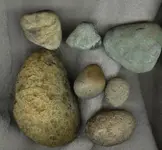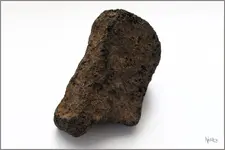UncleVinnys
Bronze Member
- Joined
- Dec 27, 2007
- Messages
- 1,150
- Reaction score
- 171
- Golden Thread
- 0
- Location
- Hancock Street, Folsom, CA
- Detector(s) used
- Minelab Equinox 600
Scanning an old tailings pile I've noticed a few things and I need help to
interpret.
1. Is gold found mostly in quartz or what?
I have found several darker gray rocks (looks like basalt, possibly shale)
that set off the detector. A couple of these have rust-like stains that seem to
be the trigger. Others are just even-gray color that set off the detector.
A couple appear to be in sedimentary rock.
So, what does that mean? Are they just minerals, or is it worth
breaking them up to see if anything is inside?
2. Spread among the tailing pile are quartz rock, mostly rounded by
river currents, but some broken up and cracked. I suspect another
detector has been there before me, breaking up the quartz rocks in
their searching. Is that a valid conclusion, or do dredgings also contain
unweathered, sharp-cornered rock?
Thanks for your response.
interpret.
1. Is gold found mostly in quartz or what?
I have found several darker gray rocks (looks like basalt, possibly shale)
that set off the detector. A couple of these have rust-like stains that seem to
be the trigger. Others are just even-gray color that set off the detector.
A couple appear to be in sedimentary rock.
So, what does that mean? Are they just minerals, or is it worth
breaking them up to see if anything is inside?
2. Spread among the tailing pile are quartz rock, mostly rounded by
river currents, but some broken up and cracked. I suspect another
detector has been there before me, breaking up the quartz rocks in
their searching. Is that a valid conclusion, or do dredgings also contain
unweathered, sharp-cornered rock?
Thanks for your response.
Upvote
0








